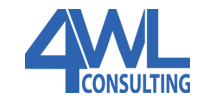Today, more than ever, having a Logistics Strategy is important, not only for the bottom line but for your customer’s experience when dealing with your company.Recently I spoke with, Ron, an executive at a midsize electronics manufacturing company and he asked me a few questions that I hear from a lot of Presidents who are under constant pressure to cut costs to increase margins while extending a high quality customer experience.
- Is there a better way of getting the best pricing other than time consuming RFP’s?
- What kind of optimization strategies would produce the highest returns?
- How do I set KPI’s for meeting or exceeding future goals?
Is there a better way of getting the best pricing other than time consuming RFP’s?
Cheap rates, are easily found on the internet or with the 20+ carriers/3PL’s that call on your company daily, but they come at a higher cost than you may think. What baseline do you compare to? Are rates, service levels and claims ratios important factors to include in your assessment?
How do you know if you have truly competitive rates? I asked Ron, do you or your team always ask carrier or 3PL companies to provide you with their “best rate”? Ron said they like to do RFP’s. “Well”, I said, “that’s what most companies do. And even though the proposal you receive from a prospective vendor may be better than what you currently have, is it the best possible rate? I’ve found that when you do an assessment to determine market rates, a company with a transportation spend of $350,000 can save up to $63,000, if your spend a million on freight, the savings can be some serious money!
What kind of optimization strategies would an analysis reveal?
Ron thought they had a handle on their shipping and receiving, but by not occasionally taking a 30,000 foot view of what they were doing, was overlooking some blind spots. I told Ron about another Client that after an assessment, saved him over $12,000 on one vendor we found shipping orders multiple times a week to meet PO dates. By consolidating P.O. due dates to once a week, this allowed the vendor to consolidate shipments and reduce his transportation costs.
Another example I shared with Ron was how adopting technology to aid in the management of their transportation process would increase his team’s productivity. Reducing the time the team member spent shopping rates, tracking shipments for customers and other departments and not having to deal with carrier issues, saved that team member about 6 hours a week, which meant additional soft cost savings of $5400 not being spent on logistics but on other core competencies.
Set KPI’s for meeting or exceeding future goals
Knowing what rates they should be paying and improving their operations was 2/3rd’s of the process. What really helped was having ways to continually look at their operation and know they were on track. KPI’s they chose were spend per pound, on time pick up and delivery performance, appointment compliance, claims ratios and expedited costs to fill production delays.
By keeping track of areas where they were weak initially, the team now have goals that will not only improve profitability, but enhance their relationships with their customers.
The bottom line for Ron, spending $350,000 on shipping, was able to save $15,750 the first 3 months and is on track to save $63,000, all while reducing shipping errors, delays and returns.
Is there $63,000 dollars hidden in your logistics strategy? Or maybe even more? If that is worth talking about, contact me at miker@4way.com

